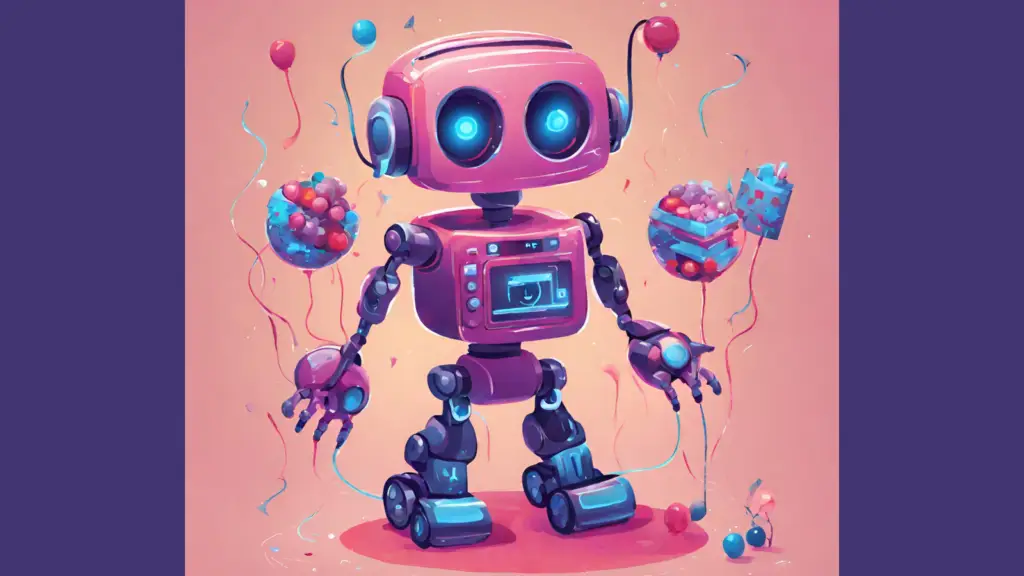It’s been a year since OpenAI released ChatGPT. Educators (and the rest of the world) were caught off guard by this new technology that could write college essays, plan vacations, and even compose a new poem or song based on the style of an original author. As we said back in May, “This changes everything.” In its first week, ChatGPT amassed over one million users. Today, it has nearly 200 million.
So what should educators know about the newest ChatGPT developments? Frankly, a lot.
The first version of ChatGPT, released on November 30, 2022, was good at composing text, but not as adept at other more advanced tasks like solving math problems and passing standardized tests. But the release of GPT-4 in March 2023 was significantly more powerful: it passed the Bar Exam, the Math SAT, and the Verbal GRE. That’s not too bad for a four-month old. But its ability to generate text was only the beginning. Today, GPT-4 is multimodal. It can see, hear, read, speak, translate languages, generate images, and write computer code. It is extraordinarily more powerful for students and teachers than simply generating text. Companies like Google and Microsoft are rapidly integrating ChatGPT or their own generative AI into many applications students and teachers use daily.
Educators were initially skeptical about ChatGPT. Our research revealed that district administrators were unsure how to set policies for ChatGPT because it posed a threat to the very core of an educational experience: the written essay to demonstrate knowledge. Focus groups conducted with school leaders in August found that they were still grappling with what to do about generative AI in their schools. One leader said, “Can we just slow it all down?”
Let’s speed up to today, as the end of the fall 2023 semester approaches. GPT-4 is vastly more powerful and ubiquitous than it was a year ago. But have educators noticed? Some systems, leaders, and educators have embraced AI, but many are still waiting to see how this technology evolves. However, as we said in a recent review of state education policies on tools like GPT-4, AI isn’t waiting for anyone. It is high time for education leaders, policymakers, and systems to get off the sidelines and take charge. We’ve provided seven reasons why there’s no time like the present to explore, embrace, and integrate large language models like ChatGPT into teaching and learning.
1. ChatGPT is an interactive writing coach
Students can use ChatGPT to write with them, rather than for them. Given the right prompt, ChatGPT can act as an excellent writing coach for students to refine their writing and improve their writing skills. Teachers can use AI to enhance, not replace, the work they already do with their students. Personalized feedback and editing is key to becoming a good writer—AI can help. The key is for students to write first, then ask ChatGPT for help with expanding their ideas, refining their prose, and adjusting the tone. ChatGPT is endlessly patient and helpful.
2. ChatGPT helps students brainstorm new ideas and stimulate creativity
A lot has been written about how ChatGPT has a tendency to hallucinate (it’s true—earlier this year, CRPE got a message from a doctoral student in search of a report we never produced. The culprit? A not-quite-accurate, ChatGPT-generated list of potential sources). While this is not useful when you need facts, this ability to freely create new, out-of-the-box ideas is quite useful. We want students to brainstorm, to generate new ideas, and to explore different ways of approaching a problem. AI can help. For example, students can use ChatGPT to generate solutions for seasonal water shortages in their community. Students can describe the conditions and constraints of their water supply, and ChatGPT can suggest ways to approach the problem. Then students can use their critical thinking skills to investigate the most promising solutions.
3. ChatGPT enables students to express knowledge visually
The image generator DALL-E 3 is now built into GPT-4 and Microsoft Bing, so students can use natural language to generate sophisticated images. This is not only extraordinarily engaging, but useful if students are working on projects that require developing prototypes, new ideas, or conveying concepts visually. This adds an entirely new dimension to visual communication, giving students who don’t have experience in art or design more options than clip art or stock photos. We know this is already happening in the classroom and that students recognize how AI can benefit them. CRPE’s communications manager instructed a university course on group communication in the spring of 2023, and most of her students—unprompted—used DALL-E 3 to generate images for an assignment.

4. ChatGPT translates text into dozens of languages at any reading level
ChatGPT can now translate audio, video, and text into dozens of languages. With so many languages spoken in schools, teachers can now use AI to communicate more effectively with parents and students. This can build stronger communities and help teachers individualize assignments for students for whom English is not their first language.
5. ChatGPT connects to the internet for up-to-date information
The original ChatGPT was frozen in time to its trained dataset from September 2021. The current version (and the Bing version) can now automatically connect to the internet for the most recent information available. This makes the tool significantly more powerful for researching current events—a typical requirement of many school curricula. Google has also launched the Search Generative Experience (SGE) for Google Search Lab users. SGE integrates AI into Goole Search, so responses come back as text and not simply blue hyperlinks. While this tool isn’t standard (yet), this is much more intuitive and useful than a traditional search engine.

6. ChatGPT creates personalized lesson plans
ChatGPT can develop lesson plans tailored to the specific needs of students. It can also be particularly helpful for creating assignments and materials for neurodiverse students. For example, ChatGPT can be used to summarize long, complex texts and provide students with considerably more accessible and lexile-appropriate study resources. Moreover, new applications like MagicSchool AI incorporate generative AI and are designed specifically to help teachers deal with all their routine daily tasks, from taking roll to communicating with parents.
7. ChatGPT listens, speaks, and reads
GPT-4 has turned assessment upside down. In a traditional classroom, teachers would ask students to read a paper and summarize in writing what they learned. ChatGPT can now scrape a PDF, summarize it, and write that paper. This is still a huge concern for many educators worried about cheating and academic integrity. However, teachers can use this new tool to their advantage instead. They can ask students to use GPT-4 to interrogate an article, “interview” the author (ChatGPT posing as Oscar Wilde, Jane Austen, or Chinua Achebe), or engage with an article in ways they never imagined. This can go beyond reading and the language arts as well—students could engage in a conversation with Einstein about the Theory of Relativity and use ChatGPT to deepen their understanding of complex scientific concepts. It is all about the conversation. Further, the ChatGPT phone app can now be used with voice commands (like Siri) and will respond with the voice of your choice. This is quite beneficial to students who struggle with reading and language.
What should education leaders do right now?
Our early research shows that other countries are investing heavily in integrating AI into teacher preparation programs and curricula. The U.S. is clearly a leader in AI technologies, but education leaders must accelerate their efforts to ensure we stay academically competitive on the global stage, while also preparing all students (not just those who can afford the latest tools) for their futures in an increasingly AI-saturated world. CRPE found that as of October, just two states have officially published guidance on AI for school systems. This is simply not enough. Policymakers, practitioners, and school leaders can no longer sit by as AI evolves: the longer they wait, the more catch up they’ll need to adequately serve students.






